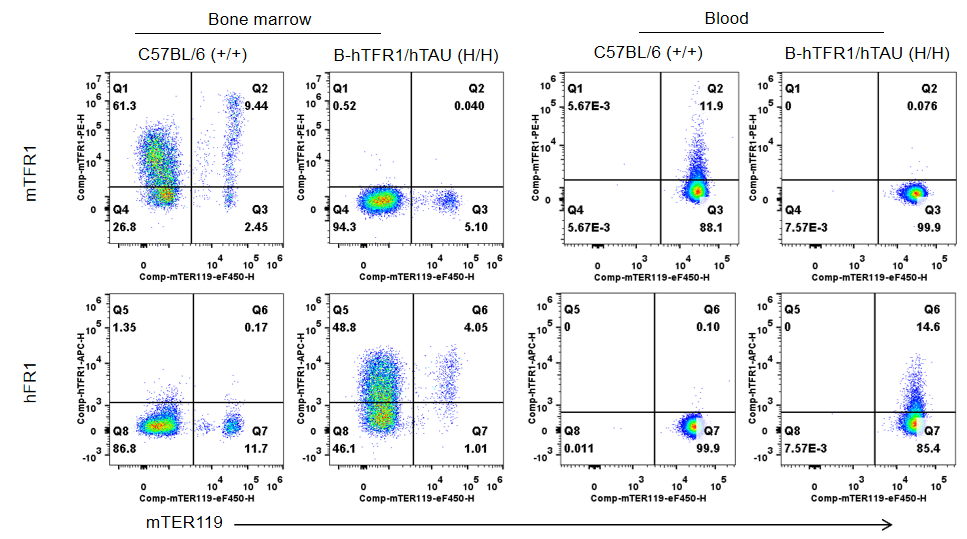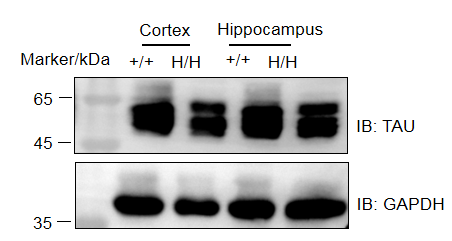| Strain Name |
C57BL/6-Tfrctm1(TFRC)Bcgen Mapttm1(MAPT)Bcgen/Bcgen
|
Common Name | B-hTFR1/hTAU mice |
| Background | C57BL/6 | Catalog number |
113290 |
|
Related Genes |
CD71, IMD46, T9, TFR, TFR1, TR, TRFR, p90; TAU, MSTD, PPND, DDPAC, MAPTL, MTBT1, MTBT2, tau-40, FTDP-17, PPP1R103, Tau-PHF6 |
||
|
NCBI Gene ID |
7037, 4137 | ||
- TAU is mainly distributed in the central nervous system, most of it exists in the axons of neurons, and a small amount exists in oligodendrocytes. TAU is involved in neurodegenerative diseases, and most prominently in the pathogenesis of Alzheimer disease (AD).
- TFR1 plays a crucial role in regulating the distribution of iron in the brain, involving multiple biological processes such as cell metabolism, development, myelination, and neurotransmission. Due to the expression of TfR1 in brain endothelial cells, it serves as an ideal target for drug delivery. Various drug delivery strategies targeting TfR1 have been developed to effectively penetrate the blood-brain barrier and promote therapeutic interventions for brain diseases.
- Gene editing strategy: The exons 2~10 of mouse Mapt gene that encode the full-length protein were replaced by human MAPT exons 2~15 in B-hTFR1/hTAU mice. The 3’UTR region of the mouse gene are replaced by human counterparts. The chimeric MAPT expression is driven by endogenous mouse Mapt promoter, while mouse Mapt gene transcription and translation will be disrupted. The exons 4-19 of mouse Tfr1 gene that encode the extracellular region were replaced by human TFR1 exons 4-19 in B-hTFR1/hTAU mice.
- Protein expression analysis: TAU were detected in cortex and hippocampus of both wild-type C57BL/6 mice and homozygous B-hTFR1/hTAU mice. Mouse TFR1 was detectable in wild-type mice. Human TFR1 was exclusively detectable in homozygous hTFR1/hTAU mice but not in wild-type mice.
- Application: This product is used for pharmacodynamics evaluation of Alzheimer's disease (AD).
Targeting strategy
Protein expression analysis


Western blot analysis of phosphorylation of TAU protein expression in homozygous B-hTFR1/hTAU mice. Cortex and hippocampus lysates were collected from wild-type C57BL/6 mice (+/+) and homozygous B-hTFR1/hTAU mice (H/H, 6-week-old mice), and then analyzed by western blot (anti-TAU antibody: CST, #46687). 40 μg total proteins were loaded for western blotting analysis. TAU were detected in cortex and hippocampus of both wild-type and homozygous mice.
Inhibitory efficiency of the drug against the human TAU

Note: This experiment was performed by the client using B-hTFR1/hTAU mice. All the other materials were provided by the client.









